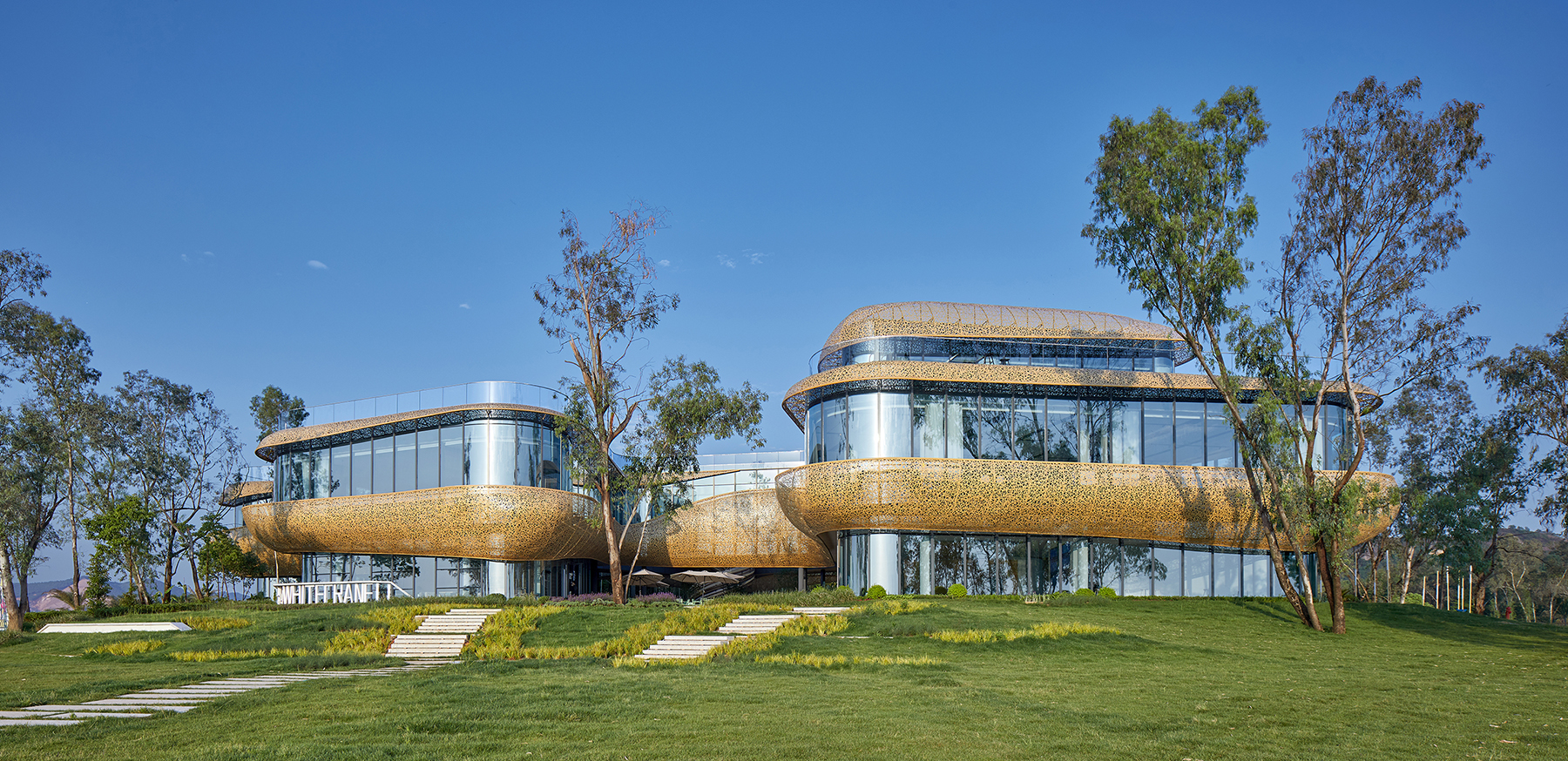

设计单位 建识(北京)设计咨询有限公司+上海建言建筑设计有限公司
项目地点 江西贵溪
建成时间 2023年5月
建筑面积 3620平方米
本文文字由设计单位提供。
01
项目起源
白鹤湖游客中心是白鹤湖旅游综合开发的核心部分,其挑战在于如何在山水悠然的环境中置入一个现代文旅建筑,让它既满足使用功能,又能与自然和谐共生,融于林而伴于水。
The White Crane Lake locates in Yingtan, Jiangxi Province, with a water area of 10 square kilometers. The Visitor Center is the core part of the White Crane Lake's tourism development. The challenge is how to place a modern building in an environment with mountains and lakes, which not only to meet practical functions, but also to harmonize coexists with nature, melted in the forest, nestled beside the lake.


02
设计概念
设计团队在最初的建筑形式思考中,一个很容易的选项是采用江西当地民居的材料和形式符号,加以抽象、转译,用更现代的手法重新诠释当地传统建筑。但考虑到本项目近3000平方米的体量,在水岸边出现一座大尺度的赣派新中式建筑,反倒显得突兀。最终,设计师在现场的直观感受起到了决定性作用:这个建筑应是独一无二属于白鹤湖的,既不去过多地关联在地化民居风格,又不刻意强调传统材料与建造方式,而是突出场地本身的特质,强调与自然山水的对话。
the architect’s intuition and experience came into play and a general design approach was decisively determined. Rather than overtly associating with the local residential architectural style or excessively emphasizing traditional materials and methods of construction, the new building would instead accentuate the natural qualities and atmosphere of the site of White Crane Lake itself.

游客中心的选址在一片滩涂之上,三面环湖,东侧为广袤的毛竹林。清晨太阳未升之际,湖面云雾缭绕,氤氲于竹林之间,徜徉其中,如冯虚御风。为了捕捉这转瞬即逝的感受,设计师提出“水岸竹云”的设计概念,将水、岸、竹、云四种意向融为一体,以建筑的形式语言呈现出来。
The site locates on the shore of the lake, with a bamboo forest on the east. In the early morning before the sun rises, the lake is covered with clouds and mist, which are dispersed into the bamboo forest. Strolling in the forest, people enjoy themselves as if they are flying up in the sky. In response to these phenomena, the designers proposed the design concept of "Bamboo Clouds by the water", which integrates the four site elements of water, shore, bamboo and clouds, to architecturally express it.




建筑采用了分散式布局手法,以圆润的曲线柔化了与环境的关系;同时,分散的体量削减了人们对建筑尺度的感知,游客无法一眼看到建筑的全貌,舒展的建筑仿佛在环境中流动,人们的视线与脚步也因此跟随着它一起移动,步移景异,像画卷一样在湖面上展开。
In order to minimize the sense of intervention in the environment, the building volume adopts a decentralized layout with curves to soften the relationship with the environment. The decentralized volume cuts down people's perception of the scale of the building, and visitors can't see the whole building at a glance. The spreading building volume seems to flow with the environment, and people's view and footsteps move along with it. With every step, the scenery changes, unfolding like a scroll on the surface of the lake.


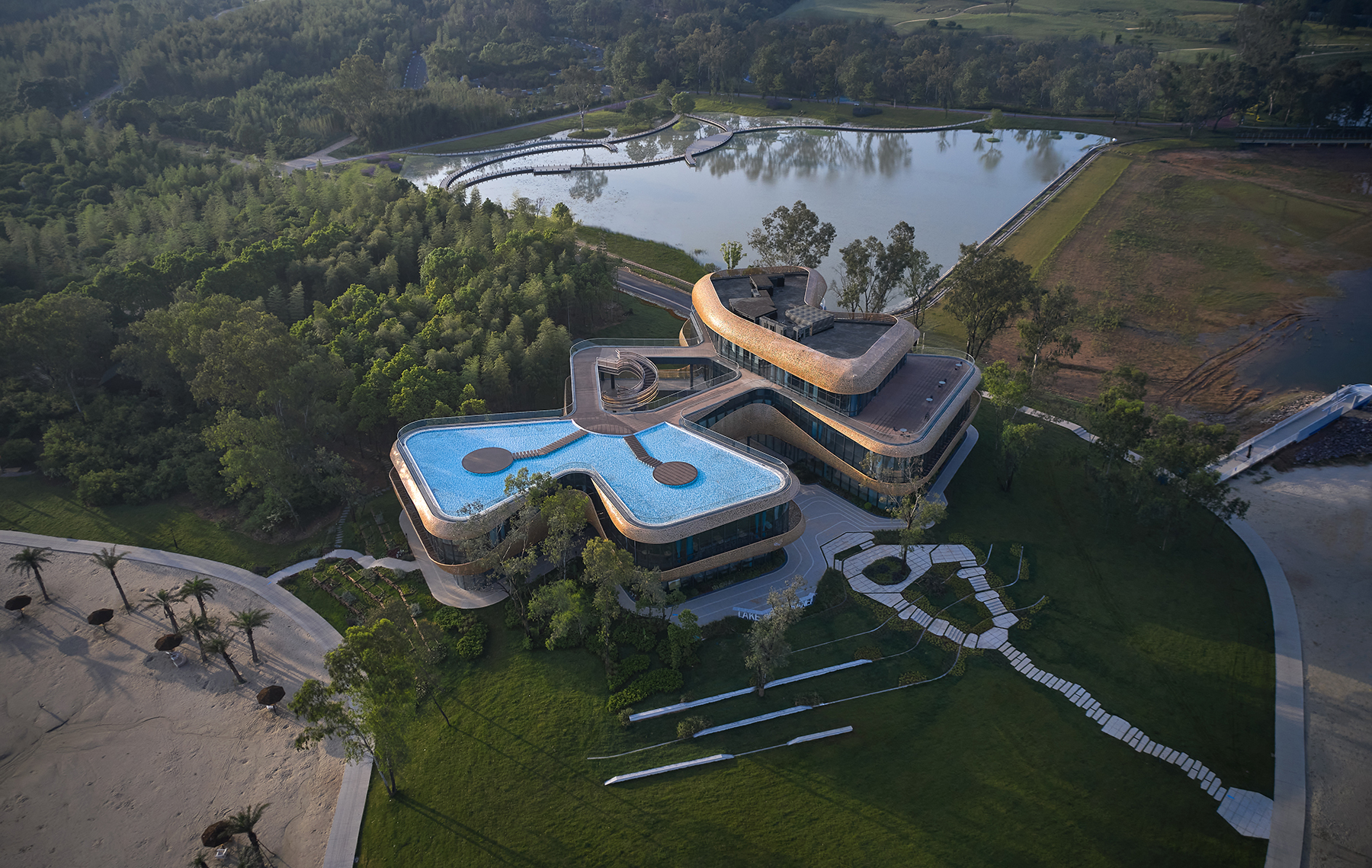


03
竹影婆娑
设计师首先将建筑以通透的玻璃盒子介入环境,又引入了第二层“竹编表皮”,竹表皮围绕建筑上下起伏,宛如白鹤伸展的羽翼,又宛若水岸边一朵闲适悠然的竹云。连续的表皮整合了分散的建筑体量,让建筑看起来有了延续感,并与自然融为一体。
The designer choose a transparent glass volume to intervene in the environment, and then introduce a second layer of "bamboo skin". The skin floats up and down around the building, like the wings of a white crane, or like a leisurely bamboo cloud on the waterfront. The continuous skin integrates separate building volumes, giving them the appearance of continuity and integration with nature.
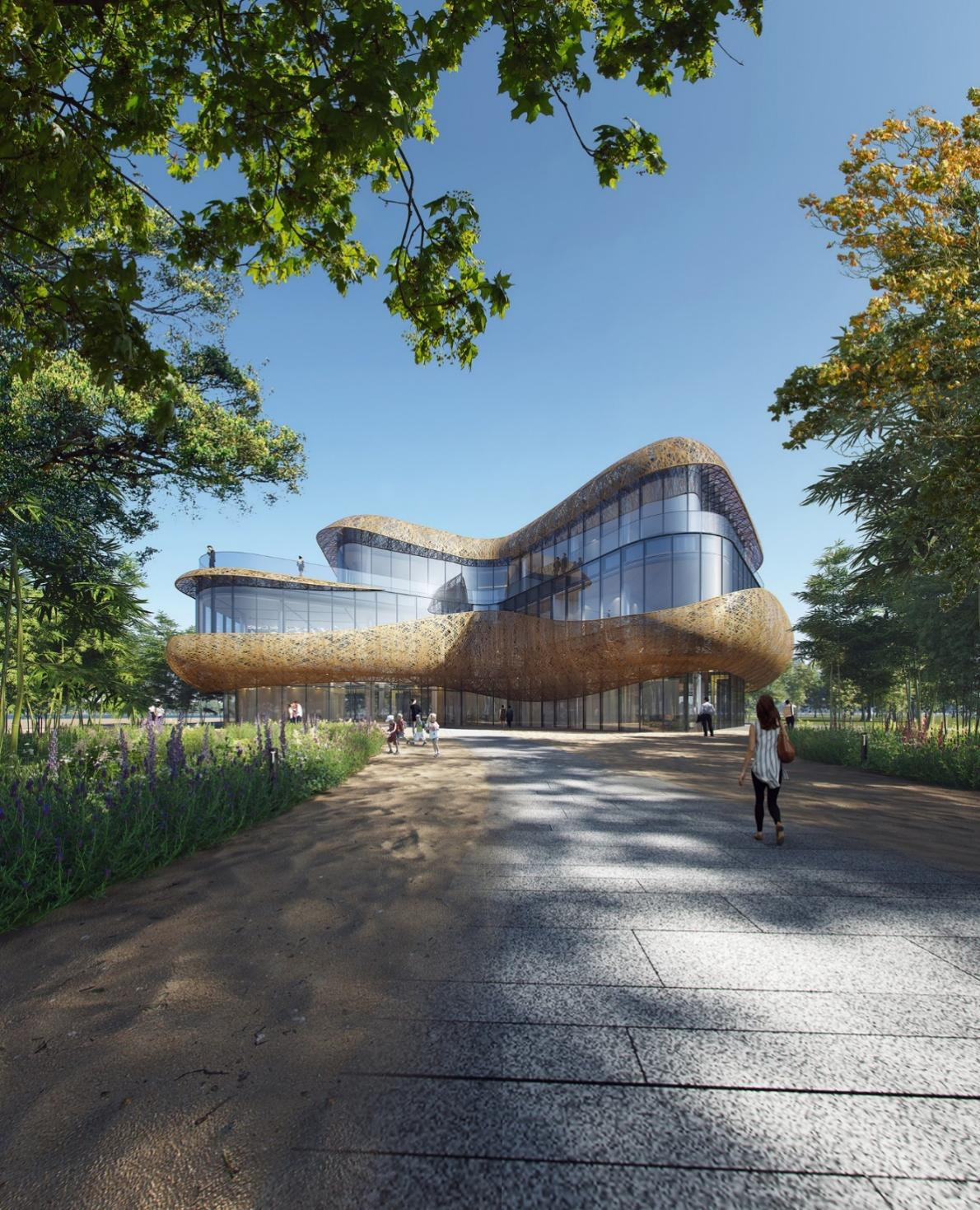





04
逻辑生成
竹编表皮的生成逻辑是一个理性推导的过程:首先通过建筑轮廓生成主体控制线,进而根据功能、景观视野调整次级表皮控制点,形成上下起伏的形态,既呈现出竹云的漂浮流动感,又保证了室内公共空间最好的景观视线。
The form of the woven “bamboo skin” was developed according to an analytical design process: first, the defining line of the building’s envelope was established according to programmatic and formal considerations. Following this, secondary points along the envelope were chosen as a basis for the undulations of the skin, according to the building’s functions and the particular view of the landscape at each point – resulting in the semblance of a floating bamboo cloud from the exterior, and ensuring the best possible views from the interior public spaces.
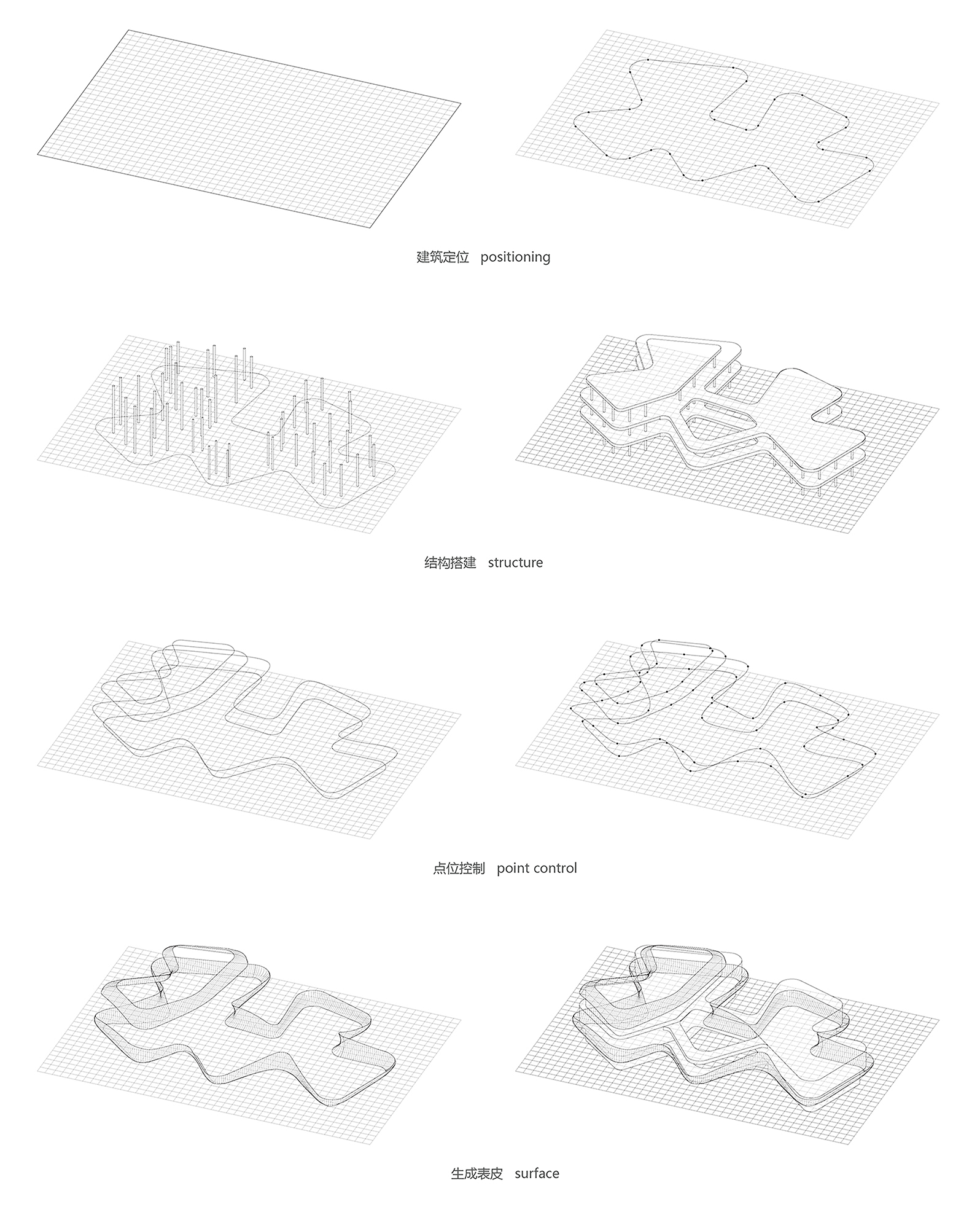


设计师通过Grasshopper软件对表皮纹理进行一系列模拟分析,最终选择了轻盈通透,可实施性高的“编织”状表皮肌理。
In the process of developing the final form and texture of the woven “bamboo skin”, the architect conducted a series of schematic explorations, looking at various potential patterns which could be incorporated. In the end, the lightest option was chosen for its clear, translucent quality, and practical feasibility as a “woven” texture for the building’s skin.





05
材料 & 构造
设计师在与业主和供应商反复沟通及现场测试后,为了保证耐久性和效果,最终放弃了天然竹材,采用一种表面经特殊处理的仿竹金属合金,可以在80%程度上模仿竹材的质感和纹理。虽然失去了天然竹木最为自然圆润的触感,但却极大的兼顾了成本和后期维护,对于一个小型公共建筑来说,这也是权衡各方诉求后的结果。
Extensive consultations regarding the building skin were made with both the client and suppliers, while significant on-site testing was also conducted in order to ensure durability and the desired visual and tactile effect. In the end, the designer finally decided to adopt a special surface-treated metal alloy, which provides a robust material with a strong resemblance to natural bamboo. Although it does not possess the tactile qualities and soft touch of natural bamboo, it was chosen for its long-term viability, ease of maintenance, and overall cost. For a modestly scaled public building, it was deemed to be the best solution by all parties involved.



外表皮的构造,分为菱形网格基底层和自由穿插编织层,由弧形镀锌钢管支撑,每一根钢管的弧度均与表皮弧度一致,再通过定制的金属抱箍与玻璃幕墙竖龙骨连接,其模数严格对应幕墙1500毫米的竖向分格,保证视觉一致性。设计师通过精细的节点控制和全手工的、有一定随机性的编织过程,最终呈现出想要达到的“竹云”效果。
The skin is composed of a diamond-shaped grid which serves as a base layer, and a densely interspersed woven layer, which is supported by a series of curved galvanized steel pipes. The curvature of each steel pipe corresponds to the curvature of the skin. The pipes are vertically spaced at 1500mm intervals to ensure visual consistency of the curtain wall. Through the careful combination of controlling the number of grid nodes and a completely manual weaving process to ensure a degree of randomness, the final result successfully achieves the "bamboo cloud" effect that the architect had imagined from the outset.



外表皮构造考虑了与泛光照明的结合,当夕阳西下,建筑沉入夜色,外皮亮起,建筑宛如一盏浮于湖面上的竹灯笼,为夜间的景区生活增添特色。
A comprehensive lighting system has been integrated into the building’s outer skin, so that when the sun goes down and darkness sets in, the complex external latticework brilliantly lights up. The building appears to shine, recalling a bamboo lantern floating on the lake, creating a visually memorable scene for visitors to the site.





06
旋转楼梯
在建筑和连桥围合而成的庭院中,设计师精心布置了一部旋转楼梯,它既是垂直交通工具,将游客从地面引入二层观景平台,也是整个庭院空间的视觉焦点,不同半径的同心圆弧梯段,构建出极富张力的造型,成为庭院的点睛之笔。
In the courtyard enclosed by the building volume and a series of elevated walkways, the architect has carefully placed a spiral staircase: it allows visitors to ascend to the second-floor viewing platform from ground level, but also provides a strong visual focus for the courtyard space overall. Its concentric circular steps with changing radii and variegated side railing create a dynamic, complex shape which provides a creative tension with the other elements of the space.





07
水天一色
二层屋面露台设置了无边界景观水池,当游客伫足远眺,水池与湖面融为一体,直至水天一色的远方。
A borderless pool has been incorporated into the roof terrace on the second floor, which has been designed so that the surface of its water seems to blend with the distant blues of the lake and sky beyond when looking over and across it.



08
功能布局
游客中心分散式的体量,分别承载了接待、餐饮、会议、VIP会所等功能。接待大厅布置在可达性最佳的西南角,景观最好的西北角作为餐饮功能使用,后勤位于私密的东南角部,VIP会所布置在顶层,最大化湖面的景观价值。
The decentralized volume of the building corresponds to different functions, including a general reception lobby, restaurant, multi-purpose hall, VIP clubhouse. The reception hall locates in the southwest side with the best accessibility. The northwest side with the lake view is used for catering. The VIP club is arranged on the top floor to maximize the landscape value of the lake.





09
水岸竹云
设计师把建筑作为了一种“诗意的想象”,采用了“水岸竹云”的设计概念,使建筑以一种柔化的形态融入山林湖水,成为自然本身的一部分。那些清晨弥漫在湖面的云和雾,它们幻化为漂浮在空中的建筑,而建筑,反而退隐为岸边的浮云。
The designers took on the architecture as a kind of poetic imagination. With the design concept of "bamboo clouds by the water", the new building is gently integrated with the surrounding mountains and forests, and becomes a part of nature seamlessly. The cloud and mist that rise from the lake in the early morning are transformed into an edifice which sseems to hang in the air. Instead, the building becomes floating clouds of bamboo on the shore.
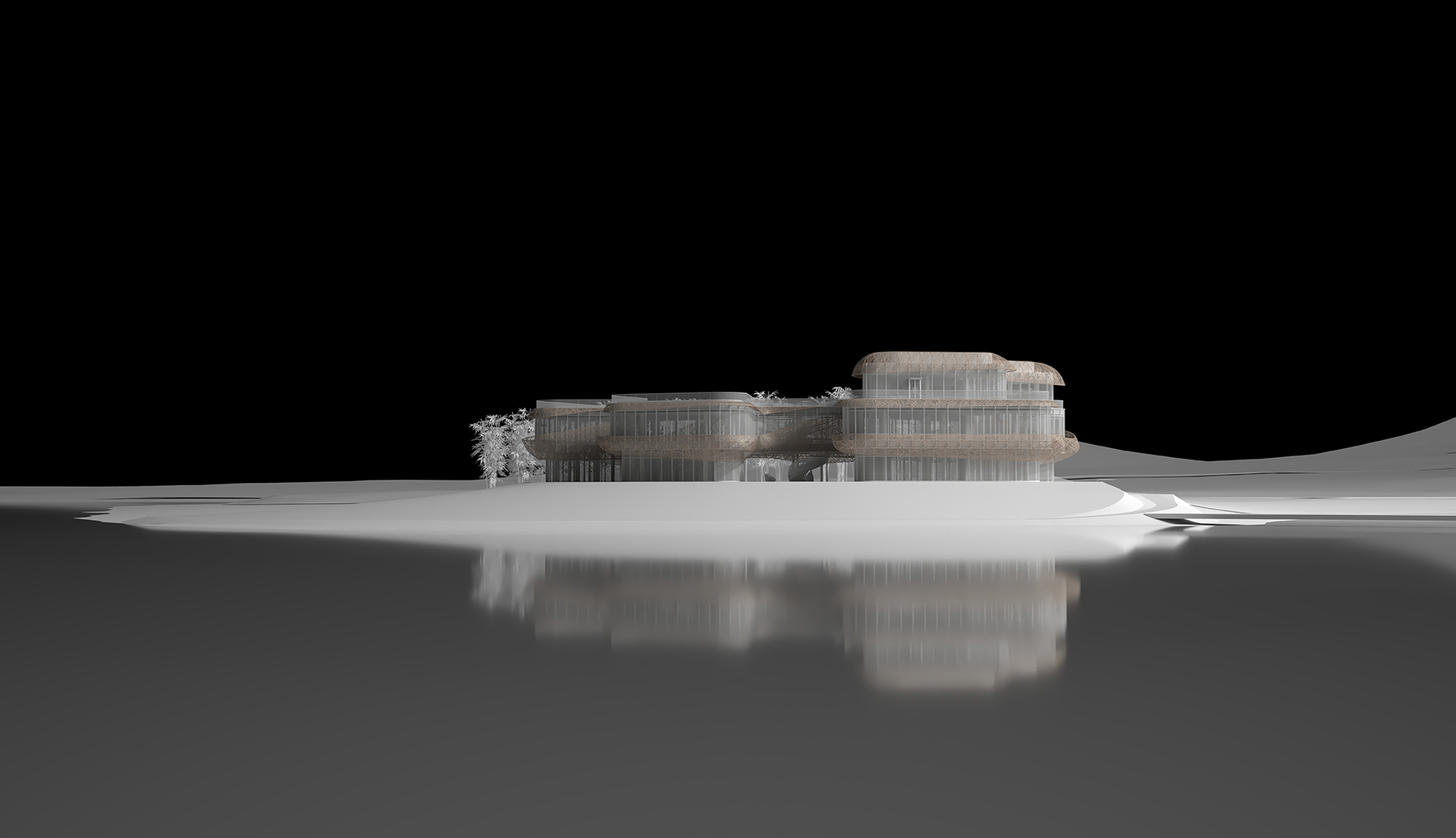
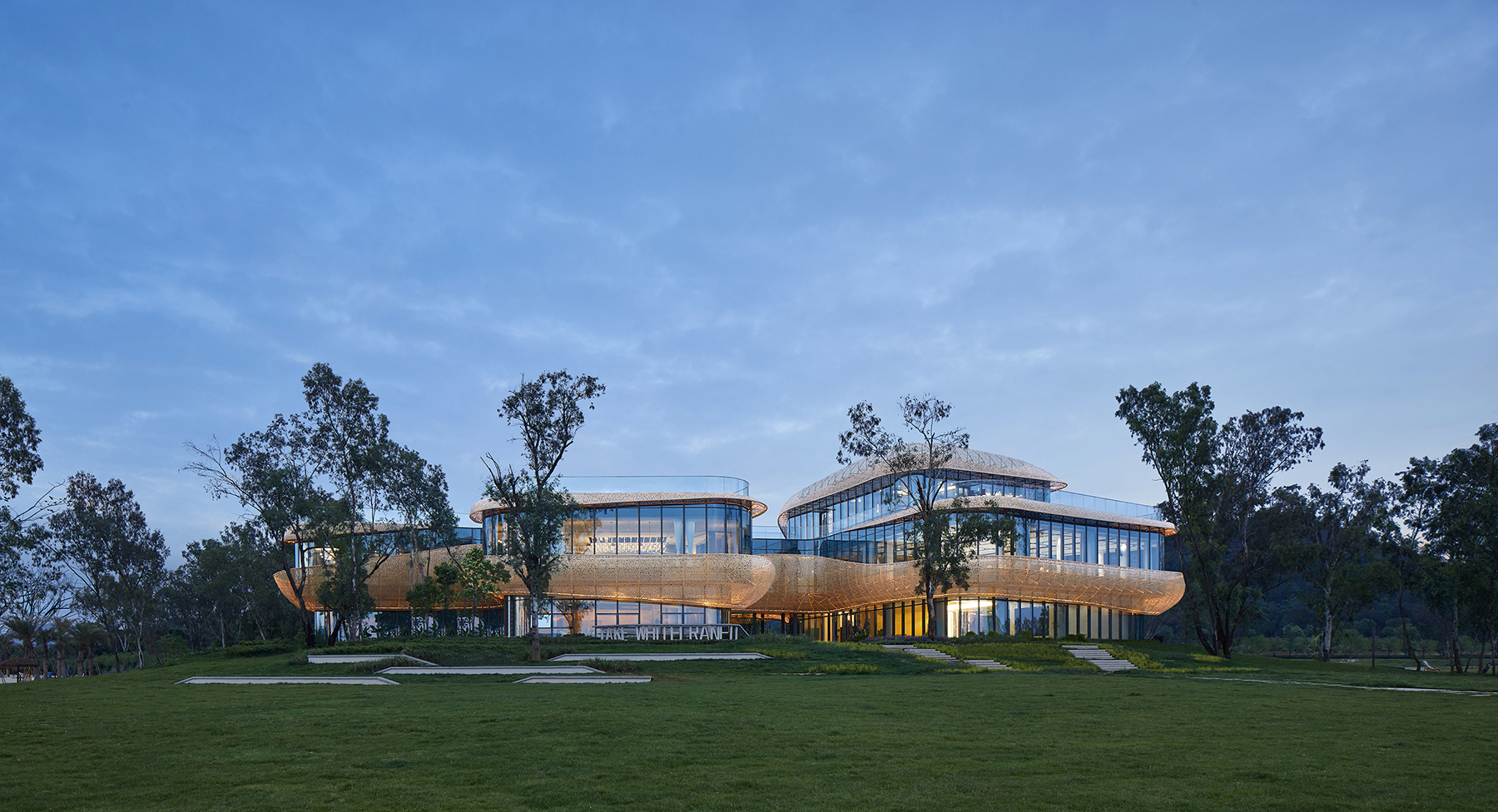


完整项目信息
项目名称:白鹤湖游客中心·水岸竹云
项目类型:建筑设计
项目地点:江西省贵溪市白鹤湖景区
设计单位:建识(北京)设计咨询有限公司+上海建言建筑设计有限公司
总负责人:戴烈
主创建筑师:杨金昂
设计团队完整名单:黄川汇,王震东,王会娟,张正
业主:江西国贵文旅发展有限责任公司
建成状态:已建成
设计时间:2021年5月-2022年6月
建设时间:2021年12月-2023年5月
用地面积:6500平方米
建筑面积:3620平方米
建筑:建识(北京)设计咨询有限公司+上海建言建筑设计有限公司
室内:建识(北京)设计咨询有限公司
结构:建学建筑与工程设计所有限公司
景观:深圳奥雅设计股份有限公司+江西省建筑设计研究总院集团有限公司
照明:江西省中业景观工程安装有限公司
摄影师:曾江河
版权声明:本文由建识(北京)设计咨询有限公司授权发布。欢迎转发,禁止以有方编辑版本转载。
投稿邮箱:media@archiposition.com
上一篇:非常建筑新作:院内檐下,温州医科大学国际交流中心
下一篇:建言|对话吴蔚:建筑是最贵的“艺术”,同时也是社会责任和公共属性的载体